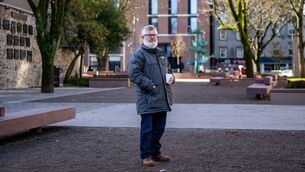Airport deaths - Tragedy puts so much in perspective
The Manx2 operated plane, travelling from Belfast with 12 people on board, crashed at 9.45am. Two of the survivors walked from the wreckage, thanks, in no small part, to the prompt efficiency of the airport’s rescue services.
Early reports suggest they were on the scene so very quickly that they prevented fire spreading through the wreckage. Their professionalism was matched by the gardaí, the ambulance services, hospital staff and all those involved in the city’s emergency plan.
Without such immediate intervention there might well have been more than six families coping with the loss of a loved one. The services’ reaction, even in the face of tragedy and danger, offers reassurance to all air travellers and those who might have to depend on the city’s emergency plan.
That will be of little comfort to the families of the victims — including the Spanish pilot and British co-pilot — or those still in intensive care. They, and anyone else who travels by air, will want to know how this awful accident occurred. It is far, far too early to reach any sort of reliable conclusions but the suggestions that, at the time of the crash, fog was so dense that the crash scene could not be seen from the airport terminal, gives rise to all sorts of worrying questions.
It creates an impression that conditions, and specifically visibility, were such that the possibility of trying to reach another airport might have been considered. This option was limited as Shannon and Waterford airports were closed at that time but Kerry Airport was open. We will have to wait until crash reports are finalised to know if Kerry was a realistic alternative or if the plane was carrying enough fuel to reach it. The reports may conclude that the pilot had little or no alternative but to attempt a landing at Cork.
That the crash occurred on the third attempt at a landing adds to those worries. This feeling is exacerbated by the claim by a local resident that he deferred a walk at that time because he felt visibility was so poor that motorists might not see him.
It must be acknowledged, though, that modern navigational equipment, and we do not know how the plane was equipped, can usually deal with fog — and routinely deal with darkness — without any difficulty.
A number of investigations are already under way,including one by the Department of Transport’s Air Accident Investigation Unit, and the circumstances of the tragedy will be established in time.
At this point all we can do is speculate and offer congratulations to the emergency services. But most of all we must remember that this morning six families endure the grief of having lost a loved one.
Our thoughts must be with them.














